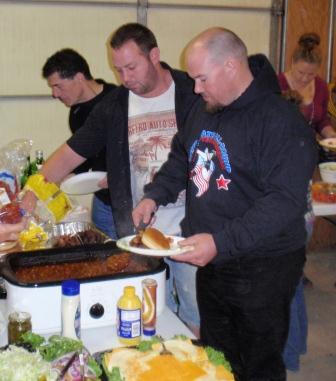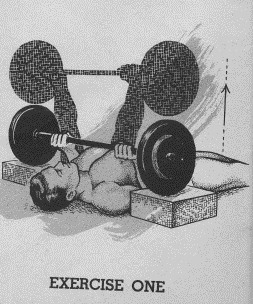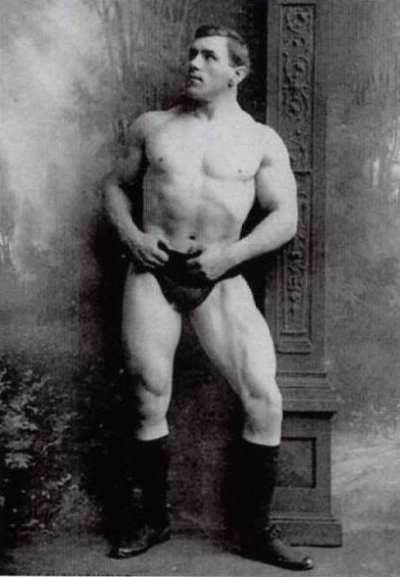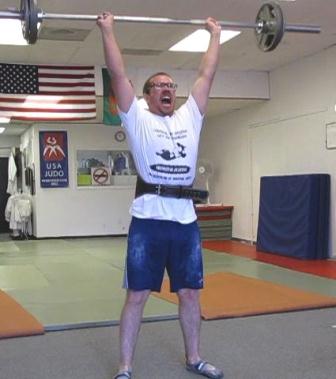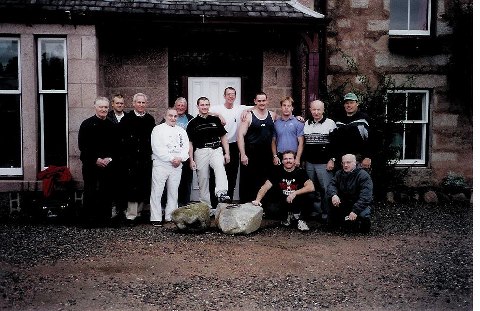by Al Myers
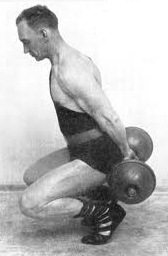
Demonstration of the REAL Hack Lift!
Yesterdays story on the Hackenschmidt Floor Press opened up another topic for me (the Hack Lift) which I briefly discussed, but I think needs a little more discussion. George “Hack” Hackenschmidt has been often tied to the naming of the Hack Lift. As I stated yesterday, I feel this is slightly incorrect as the term “hack” comes from the German word “hacke” in abbreviated form. I have read several sources supporting this feeling. In the USAWA Discussion Forum yesterday Dan Wagman provided an excellent post on this argument, which I feel should be repeated here. These are Dan’s words:
I’m excited about trying the Hack FP and really liked the fact that Al went beyond just sharing the proposed rules in his latest blog. To that point, I’d like to add some info regarding the origin of calling a lift the Hack-something-or-another. I grew up in Germany and am fluent in all respects in that language and two dialects, so I can speak with some authority regarding the potential root of the name of the Hack-lifts.
Al is somewhat correct in that the German word “Hacke” can be used to denote a heel. However, this is commonly only used in southern German dialect. The proper German word for heel is “Ferse.” A Hacke is indeed an axe, pickaxe, or mattock type tool.
Now, there’s another consideration to bear in mind. It is highly uncommon in Germany to shorten names as we do in America. Joseph would be Joseph, not Joe; Alfred would be Alfred, not Al; Schmidtbleicher would be just that, not Smitty; and most certainly nobody in Germany would’ve called Hackenschmidt Hack. He was Estonian, where many Estonians are of German descent, and based on his name, I’d surmise he was one of them, so I would therefore venture to guess that he wasn’t ever called Hack there, either.
So where does that leave us? Since he spent most of his life living in London, and since it is also fairly common in British English to shorten names, I would venture to guess that he was just called Hack over there and since he was so good at the deadlift from behind the body, that lift was just called the Hack deadlift, though some sources also called it the Hack squat.
Hope this didn’t end up boring y’all, I just think this stuff is interesting as all heck.
Daniel (my German name )
George Hackenschmidt was very well-known for doing the Hack Lift and he was very good at it. That alone gives “his name” some bearing into the naming of this lift as the Hack Lift. I won’t deny him that. But the way he did the Hack Lift is VERY MUCH different than the way we do it under the USAWA/IAWA rules. I’m going to quote the famous strength historian David Willoughby here on the description of the REAL Hack Lift, so it won’t be construed by my own interpretation. This is straight from his book The Super Athletes:
George Hackenschmidt of Russia, performed 50 consecutive “Hacke” (or “Hocke”) lifts with 50 kilos (110 3/4 pounds). This feat was done in front of the famous German weight-trainer, Theodor Siebert, at Alsleben, Germany, Feb. 15, 1902. “Hack” also performed a single lift in the same style with 85 kilos (187 1/4 pounds). The latter was equal to a flat-footed squat with about 522 pounds on the shoulders. The “Hacke” lift is performed by knee-bending on the toes while holding a barbell with the hands together behind the hips, thus leaving the back muscles out of the effort and doing all the work with the legs.
WOW – as if the Hack Lift isn’t hard enough to do the way we do it! Hack was doing them on his toes with the hands together! I have read other reports describing the original Hack Lift, and as well as the hands being together, the heels were together as well. That would make it near-impossible for most lifters to even grab the bar that way. I was intrigued by the German meaning of the word Hocke. Again, Dan came to my rescue in the USAWA Discussion Forum and gave this reply:
Yes, Hocke is also a German word. It refers to what we might consider crouching down or when you without weight go into a deep squat where your hamstrings touch your calves. You know, the sort of “move” you do when you **** in the woods.
Since you sort of hock down when you do a Hack sq/dl, it’s also feasible that this is where the name came from. But I would have to guess no on that one, too. The reason I say this is because Hackenschmidt didn’t seem to have spent a lot of time in Germany at all and because he lived primarily in London. With that in mind, and of course without knowing for sure, I would guess that people would just see him do stuff, whether he was the first to do it or not, and they’d probably go something like, “Hey, what’s Hack doing there? Let’s try that…” and then they just ended up calling the lift the Hack-whatever.
Regardless, personally, I like thinking of it as being a reference to Hackenschmidt. The dude was stout as all heck and had a body that people today, even when saucing, couldn’t get. And let’s not even talk about his strength and dominance in wrestling. He was from an era when men were men and it motivates me to do a Hack when thinking of him as opposed to my heel.
Dan summed things up very well in his last sentence when he said, “he was from an era when men were men and it motivates me to do a Hack when thinking of him as opposed to my heel.” I feel the same way – and because of that I’ll always feel that the Hack Lift was partly named that way in memory of him.
